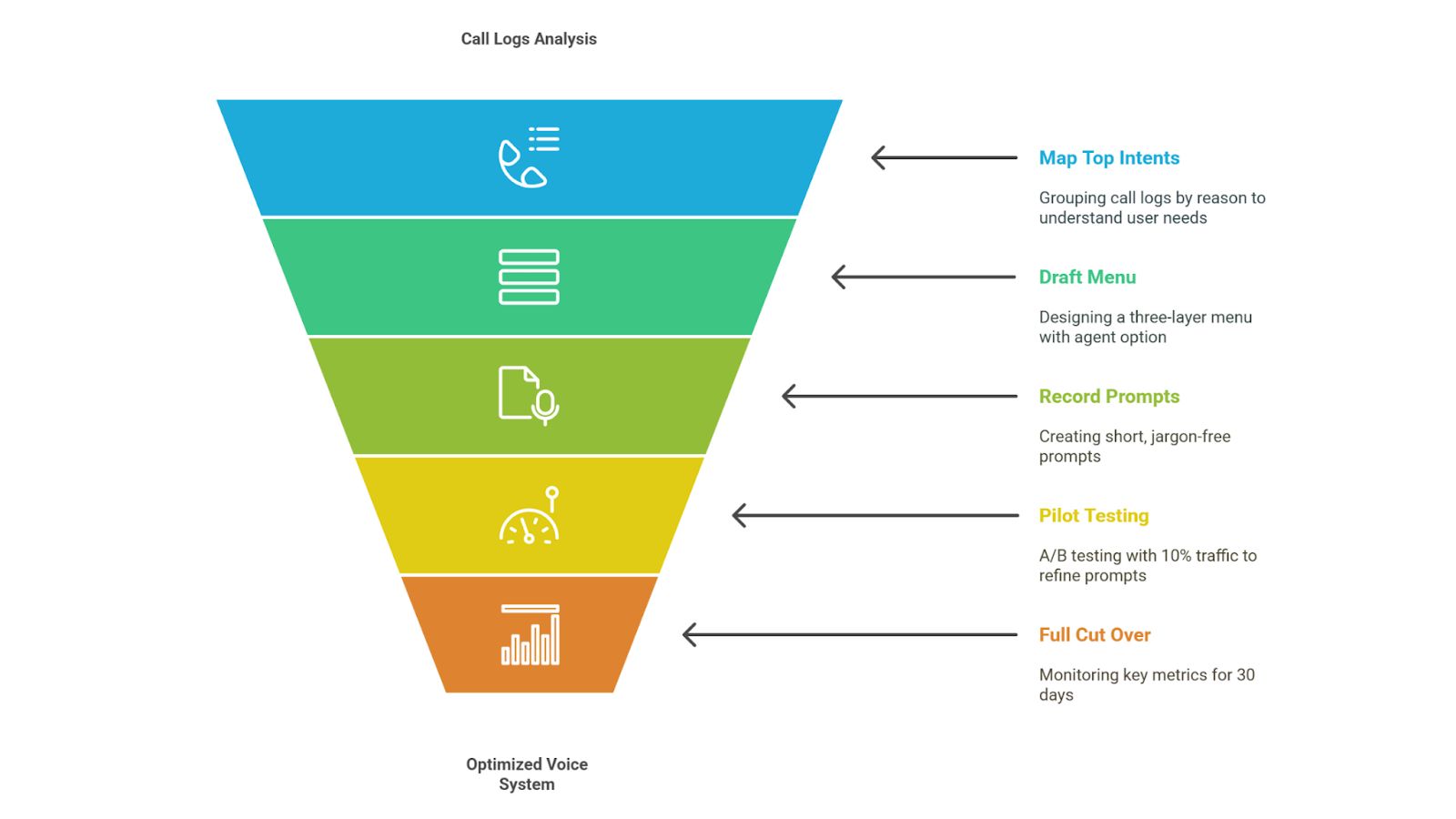How Call Center IVR Works (The Short Version)
An IVR Interactive Voice Response answers the phone before a human does. Your caller presses a key or says “billing” the system reads that input, dips into your CRM and either serves the answer or transfers the call to the right queue. Behind the curtain sit three pillars:
- DTMF tone capture – the classic “Press 1 for….”
- Speech recognition – turning free form speech into intents.
- Routing logic – a flowchart that decides where the call goes next.
When you stitch those pieces together inside a SIP trunk or a cloud telephony platform, you have a working call center IVR that screens repetitive requests and frees agents for complex ones. That’s the promise; execution is the hard part.
Six Big Wins You’ll Feel on Day One
1. Shorter wait times – On my last rollout, average queue time dropped from 3 min 12 sec to 57 sec.
2. 24/7 self service – Customers check order status at midnight without waking a rep.
3. Lower operating cost – One client saved roughly 35 % on seasonal overtime.
4. Higher first call resolution – Clear menu paths mean fewer blind transfers.
5. Consistent compliance – The system always reads the legal disclaimer.
6. Cleaner analytics – Every touchpoint is timestamped, letting QA pinpoint friction.
If your help desk KPIs are wobbling, a well built call center ivr system is the least painful lever to pull.
Features I Refuse to Launch Without
| Feature | Why It Matters in Real Life |
|---|---|
| Drag and drop flow builder | No dev needed for tiny copy tweaks at 2 a.m. |
| TTS + recorded prompt mix | Keep branding tight yet update seasonal promos instantly. |
| Data dips into CRM/WMS | “Hi Sarah, your order #123 ships tomorrow.” Personal beats robotic. |
| Natural language fallback | Saves callers who say “representative” instead of “press zero.” |
| Real time analytics | Spot a 40 % drop off on step 3 before Twitter does. |
| Multilingual support | Our Florida rollout needed English, Spanish, and Haitian Creole out of the box. |
Skip any of these and you’ll be rewriting the flow two quarters later.

Five Step Implementation Roadmap (Tried & Tolerated)
1. Map top intents – Pull six months of call logs; group by reason.
2. Draft the menu – Three layers max, always add “0 to talk to an agent.”
3. Write and record prompts – Short, jargon free, ≤8 seconds each.
4. Pilot with 10 % traffic – A/B test wording; track containment rate daily.
5. Full cut over & monitor – Watch CSAT, abandon rate, and agent wrap up codes for the first 30 days.
Stick to this order. I once reversed steps 2 and 3 and paid voice talent to record 37 prompts for rookie mistakes.
Battle Tested Best Practices
- Keep the menu flat: if callers hit the fourth layer, you’ve lost them.
- Announce expected wait time early; it reduces hang ups.
- Use caller ID or account number to skip identification questions.
- Refresh prompts quarterly stale audio screams “we don’t care.”
- Record error paths in plain language: “Hmm, I didn’t catch that. Let’s try again.”
- Offer SMS or chat deflection for low value tasks like password resets.
These small tweaks separate a tolerable call center ivr from one that trends on r/techsupportgore.
What’s Next: AI & Visual IVR
The newest call center ivr systems look nothing like the touchtone mazes of 2005:

- Conversational AI – Large language models route calls by intent, not keywords.
- Sentiment detection – Escalate angry voices straight to Tier 2.
- Visual IVR – Send a secure link that opens an app like menu on the caller’s phone, perfect for sharing PDFs or collecting payment details.
- Voice biometrics – Authenticate in three seconds without a PIN.
I’ve piloted visual IVR in healthcare: appointment confirmations jumped 18 % because patients could pick a date on screen instead of listening to five options.
Conclusion
Deploying a modern call center ivr system isn’t about killing human jobs; it’s about giving humans only the calls worth their brainpower. Map your intents, keep the flow short, and never let the tech hide from your analytics dashboard.
Do that, and you’ll shave costs, boost CSAT, and give your agents a chance to solve real problems instead of reciting account balances.
FAQ
1. Can IVR integrate with my dusty on prem PBX?
A: Yes, via SIP trunks or a simple PSTN forward done it twice this year.
2. What KPI proves success fastest?
A: “Containment rate” (calls resolved without an agent). Aim for 30 %+ in 90 days.
3. How many menu options are too many?
A: More than five at any level. Cognitive load spikes and rage quits follow.
4. Do customers really like talking to machines?
A: They like getting answers fast. If your IVR delivers, nobody cares who spoke.
Start for Free – Create Your First Voice Agent in Minutes


